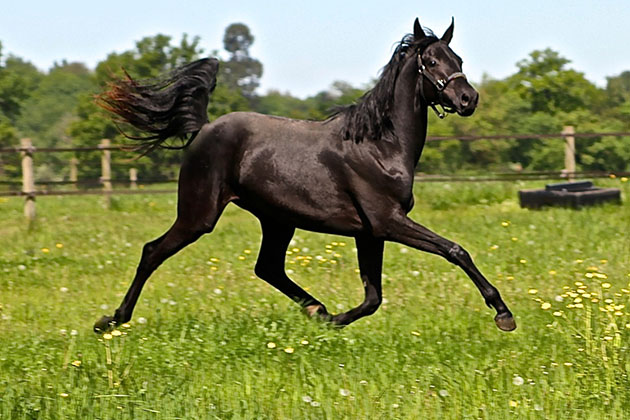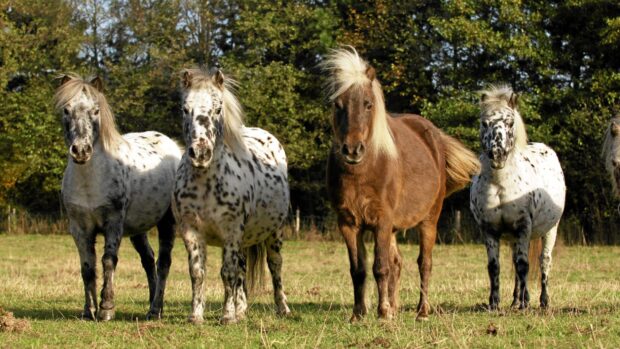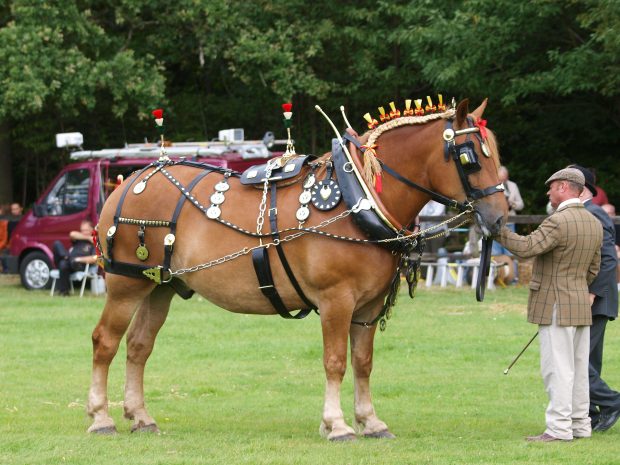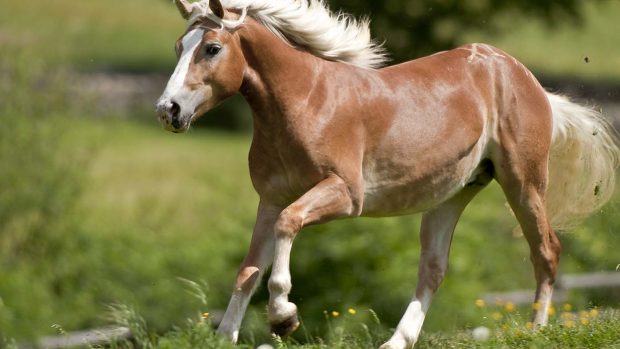The Dutch warmblood is a relatively modern sport horse breed which originated in the Netherlands, derived from two Dutch draught breeds – the Gelderlander and the Groningen.
After the Second World War, the use of equines for agricultural purposes declined, but interest in equestrian sports was increasing. The native Dutch draught breeds were therefore crossed with mainly Thoroughbreds, but also Hackneys and Cleveland Bays to produce a light, athletic horse that would succeed in the dressage and showjumping ring.
Trakheners, Selle Francais, Oldenburgs and Hanoverians were added to the stud book in order to improve the conformation and establish a calm, intelligent, and eager-to-please temperament. The horses were bred under the auspices of several stud organisations until 1970, when they combined into a single stud book, the Warmbloed Paardenstamboek Nederland (WPN). Queen Beatrice gave the stud book royal recognition in 1988, and it received the designation of Koninklijk, or Royal.
Since 2006, the KWPN has recognised three different categories of Dutch warmblood: riding horses, which are subdivided into dressage and jumping horses and make up 85% to 90% of the studbook; elegant harness horses; and the Gelders horse — a working animal similar to the old Gelderlander. Like many warmbloods, the horses must undergo a rigorous inspection process (called a keuring), proving they meet the breed standard before being admitted into the stud book. Horses are presented at the keuring when they are three or older, and breeding stallions and mares undergo regular re-evaluations and are classified according to their own achievements and that of their offspring. The standards for admittance are high, as the KWPN explicitly states that its objective is producing horses capable of performing at grand prix level in dressage and jumping.
The Dutch Warmblood usually stands between 16hh and 17hh. The head is refined and elegant, leading to a muscular, arched neck, which meets prominent withers. The horses have a long, sloping shoulder, which helps with expressive, elastic movement, and a deep girth. The hindquarters are powerful, with hock joints low to the ground. They are long-legged, elegant horses with a smooth topline. The conformation and temperament of KWPN horses varies slightly depending on whether the horse is from jumper or dressage lines, but overall, they are intelligent, friendly, and supremely athletic.
While any horse can become injured or lame, there are very few congenital issues within the KWPN breed due to the stringent requirements placed on stallions and elite mares. As part of the inspection, horses are radiographed for spavins and navicular changes. Osteochondrosis of the hock or stifle will disqualify a horse, as will any asymmetry in its conformation or movement.
The KWPN’s philosophy towards health and improving the breed is part of what draws Sara Longworth of Waverley Stud to use Dutch warmblood stallions in her Warwickshire dressage breeding programme.
She told Horse & Hound: “At Waverley Stud we use a lot of Dutch warmblood stallions. The beauty, movement and expressiveness of these horses is what first drew me to them — as well as of course their talent for grand prix dressage. Ferro (the sire of Negro), Jazz, Totilas, Bordeaux and Vivaldi are stallions which have had invaluable influence on the breed and the sport of dressage, and are all Dutch warmbloods.
“However, the professionalism of the KWPN, particularly their approach to diseases in the horse, for example genetic carriers for Fragile Foal Syndrome and OCD is also compelling. This professionalism informs their approach to stallion licensing too, so that as a breeder you can select stallions with knowledge and confidence. The KWPN leads the world in OCD research and the organisation has developed a genetic test that is available for all to use.”
Their talent is undeniable. KWPN horses have proven extremely successful at the sports of dressage and showjumping. Valegro, with Charlotte Dujardin, won the individual gold at the 2012 and 2016 Olympics, the team gold at the 2012 Olympics, and smashed world records, winning the World Equestrian Games and other significant CDIs during his grand prix competition career. His Dutch warmblood stablemates, Uthopia and Nip Tuck, ridden by Carl Hester, have also made the top 10 on the international grand prix circuit, and Uthopia was part of that gold medal-winning team in London. Before Valegro and Charlotte arrived on the scene, the previous record holder for the grand prix dressage test was the KWPN stallion Moorlands Totilas, piloted by Edward Gal.
Continued below…

Subscribe to Horse & Hound magazine today – and enjoy unlimited website access all year round
In showjumping, Nick Skelton’s KWPN stallion Big Star won individual gold at the 2016 Olympics and was part of the gold medal winning team at the 2012 Olympics. He has also won the Nations Cup in Dublin, the grand prix of Rome, and the CSIO5* in Aachen.
Hickstead, a KWPN stallion ridden by Canadian Eric Lamaze, consistently won or placed at international showjumping competitions during his career, including an individual gold medal at the Beijing Olympics in 2008, individual silver and bronze at the 2007 Pan Am games, and bronze at the 2010 World Equestrian Games in Lexington, Kentucky.
For all the latest equestrian news and reports, don’t miss Horse & Hound magazine, out every Thursday





